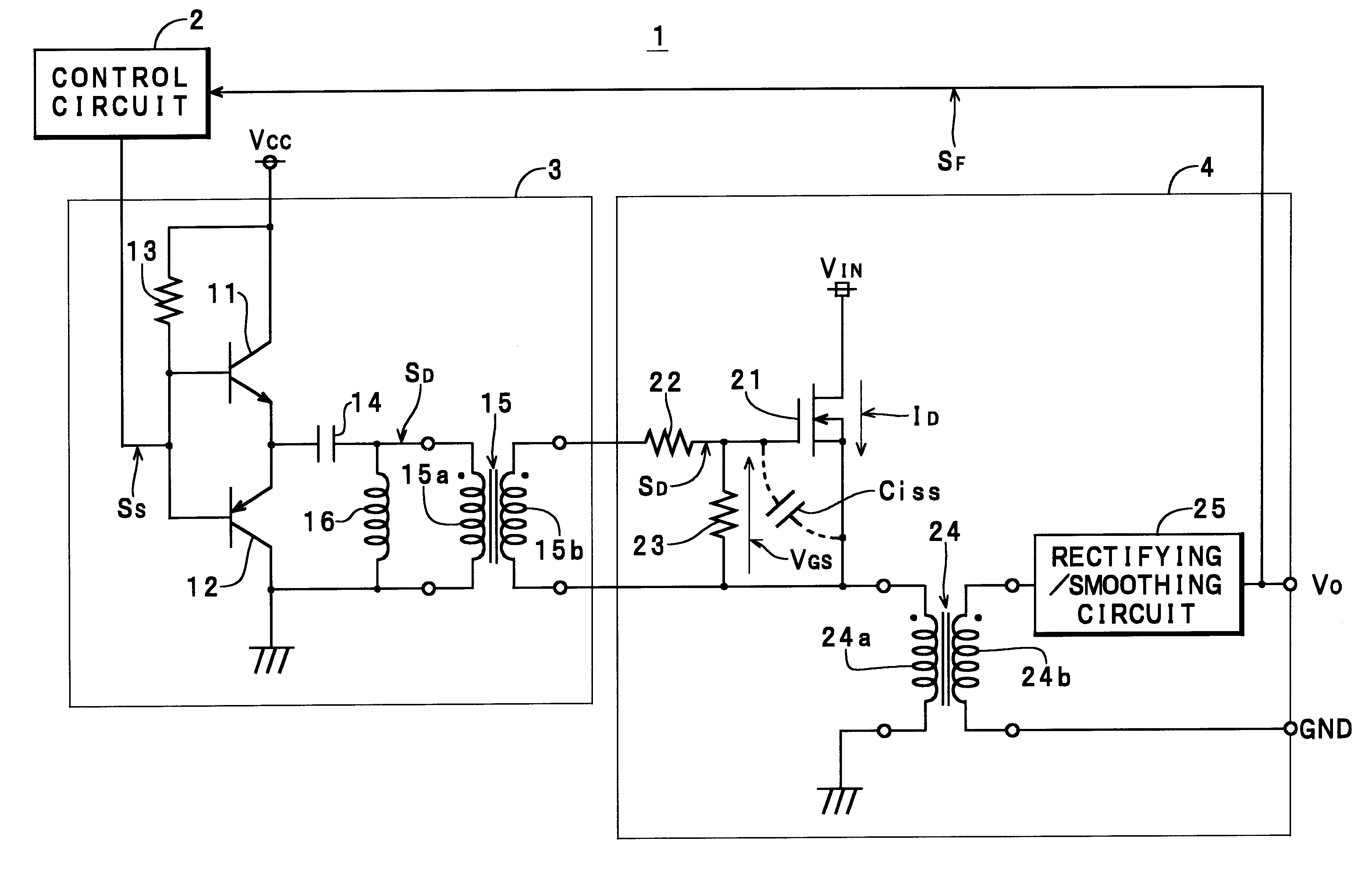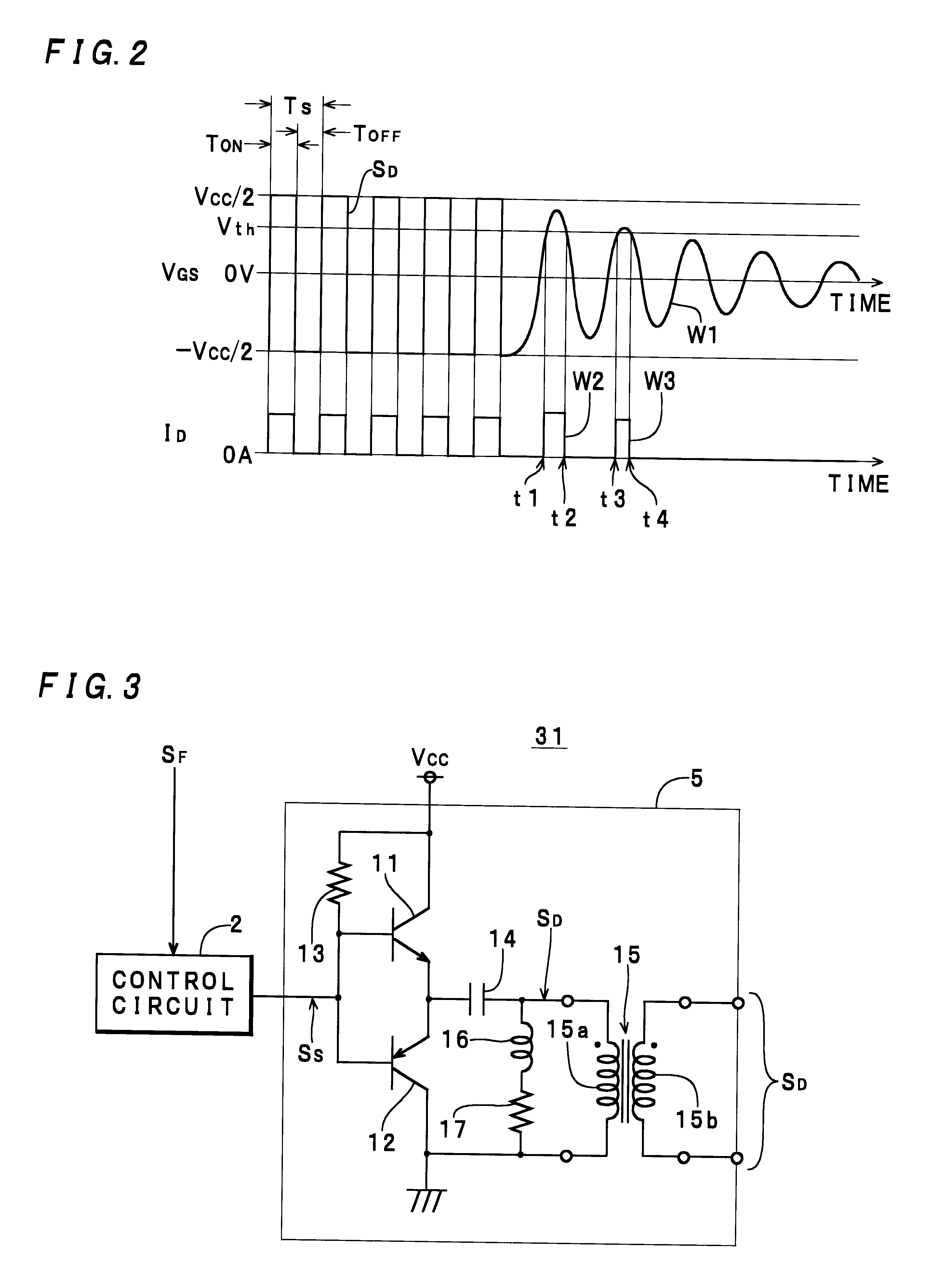Drive circuit for switching power supply
- Summary
- Abstract
- Description
- Claims
- Application Information
AI Technical Summary
Benefits of technology
Problems solved by technology
Method used
Image
Examples
first embodiment
(First Embodiment)
Referring first to FIG. 1, there is shown the circuitry of a power supply unit 1. The power supply unit 1 includes a control circuit 2 for generating a switching signal SS, a drive circuit 3, and a main circuit 4. The drive circuit 3 is comprised of a pair of an npn transistor 11 and a pnp transistor 12, which forms a complementary circuit, a pull-up resistor 13, a capacitor 14 corresponding to a capacitive element of the invention for blocking a DC current, a drive transformer 15 having a primary winding 15a and a secondary winding 15b at a turns ratio of 1:1, and an inductor 16 connected in parallel with the primary winding 15a and corresponding to an inductive element of the invention. The main circuit 4 is comprised of an n-channel MOS FET 21, which is a main switching element, bias resistors 22 and 23, a switching transformer 24, and a rectifying and smoothing circuit 25.
In the embodiment, a capacitance value C of the capacitor 14 and an inductance value L16 o...
second embodiment
(Second Embodiment)
Next, description will be made of circuitry and operation of the power supply unit 31 which is formed by modifying part of the power supply unit 1, with reference to FIG. 3. Components corresponding to those of the first embodiment are indicated by identical reference numerals, and detailed description thereof will be omitted.
As shown in the figure, the power supply unit 31 is distinguished from the power supply unit 1 in that it has a drive circuit 5 in which a series circuit formed by an inductor 16 and a damper resistor 17 is connected in parallel with a primary winding 15a of the transformer 15.
When a control circuit 2 stops operating, a series resonance phenomenon occurs in a closed circuit formed by a capacitor 14, a parallel circuit formed by the series circuit of the inductor 16 and the resistor 17 and the primary winding 15a, and the emitter and collector of a transistor 12. In this case, energy stored in the capacitor 14 is lost at the resistor 17 during...
PUM
 Login to View More
Login to View More Abstract
Description
Claims
Application Information
 Login to View More
Login to View More - R&D
- Intellectual Property
- Life Sciences
- Materials
- Tech Scout
- Unparalleled Data Quality
- Higher Quality Content
- 60% Fewer Hallucinations
Browse by: Latest US Patents, China's latest patents, Technical Efficacy Thesaurus, Application Domain, Technology Topic, Popular Technical Reports.
© 2025 PatSnap. All rights reserved.Legal|Privacy policy|Modern Slavery Act Transparency Statement|Sitemap|About US| Contact US: help@patsnap.com



